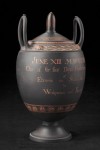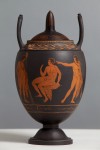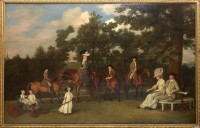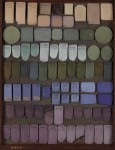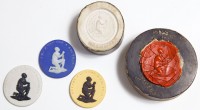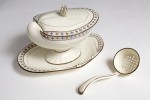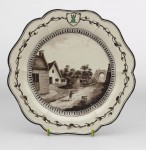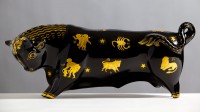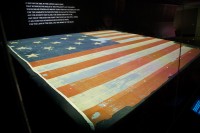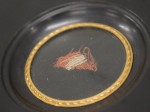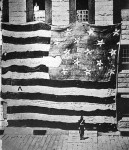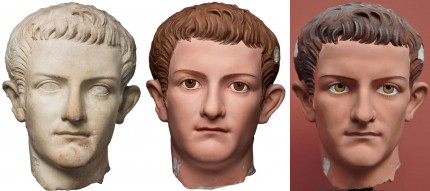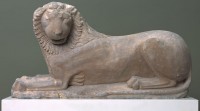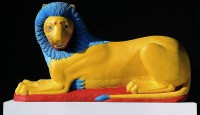 A team of archaeologists from the National Institute for Preventative Archaeological Research (INRAP) has unearthed a vast Middle Neolithic necropolis with 20 monumental tombs in Fleury-sur-Orne, in the northwestern French state of Lower Normandy. Dating to around 4,500 B.C., the tombs are of the Passy kind, named after the municipality in Burgundy 70 miles southeast of Paris where the these long funerary structures were found and radiocarbon dated for the first time.
A team of archaeologists from the National Institute for Preventative Archaeological Research (INRAP) has unearthed a vast Middle Neolithic necropolis with 20 monumental tombs in Fleury-sur-Orne, in the northwestern French state of Lower Normandy. Dating to around 4,500 B.C., the tombs are of the Passy kind, named after the municipality in Burgundy 70 miles southeast of Paris where the these long funerary structures were found and radiocarbon dated for the first time.
 The Fleury-sur-Orne monuments range in length from 40 feet to 985 feet and are enclosed on both sides by ditches 8 inches to 50 feet wide. The ditches may have contained palisades made from trees felled by stone adzes. The earth from the ditches was piled up in the center of the structure forming a mound that housed one or more graves of important people. Many of these mounds have eroded away or been destroyed by agriculture, development or war. One of the 20 structures excavated at Fleury, however, is intact and in excellent condition. The original walls of stacked grass turf are extant if somewhat reduced. Archaeologists believe they were at least six and a half feet high originally.
The Fleury-sur-Orne monuments range in length from 40 feet to 985 feet and are enclosed on both sides by ditches 8 inches to 50 feet wide. The ditches may have contained palisades made from trees felled by stone adzes. The earth from the ditches was piled up in the center of the structure forming a mound that housed one or more graves of important people. Many of these mounds have eroded away or been destroyed by agriculture, development or war. One of the 20 structures excavated at Fleury, however, is intact and in excellent condition. The original walls of stacked grass turf are extant if somewhat reduced. Archaeologists believe they were at least six and a half feet high originally.
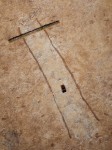 As with all Passy-type tombs, archaeologists have found few grave goods interred with the human remains: arrowheads that were originally attached to full arrows but the shafts have decayed into nothingness and the skeletal remains of whole sheep that were buried as sacrifices with deceased. In one of the tombs, 200-foot-long Monument 19, archaeologists found a single grave of a man buried with an impressive seven sheep. A grave in Monument 26 was found to contain a pelvis with a sharp arrowhead embedded in it.
As with all Passy-type tombs, archaeologists have found few grave goods interred with the human remains: arrowheads that were originally attached to full arrows but the shafts have decayed into nothingness and the skeletal remains of whole sheep that were buried as sacrifices with deceased. In one of the tombs, 200-foot-long Monument 19, archaeologists found a single grave of a man buried with an impressive seven sheep. A grave in Monument 26 was found to contain a pelvis with a sharp arrowhead embedded in it.
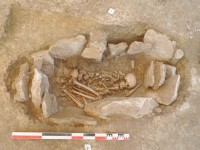 We don’t now a great deal about the people who built Passy-type funerary monuments. They were the descendants of the Danubian culture, first agrarian society in central and eastern Europe who migrated to France in around 5,500 B.C. and mixed with the local hunter-gatherers to produce the monument-builders known as the Cerny culture. These monumental necropolises were the first of their kind, not just in Europe but anywhere that we know of, predating the pyramids of Egypt by thousands of years. Since they required an exceptional amount of labour to benefit very few people, they may be indications of a burgeoning hierarchical society, but it’s unlikely that it would have been so developed as to have a massive captive workforce.
We don’t now a great deal about the people who built Passy-type funerary monuments. They were the descendants of the Danubian culture, first agrarian society in central and eastern Europe who migrated to France in around 5,500 B.C. and mixed with the local hunter-gatherers to produce the monument-builders known as the Cerny culture. These monumental necropolises were the first of their kind, not just in Europe but anywhere that we know of, predating the pyramids of Egypt by thousands of years. Since they required an exceptional amount of labour to benefit very few people, they may be indications of a burgeoning hierarchical society, but it’s unlikely that it would have been so developed as to have a massive captive workforce. 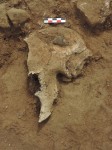 This was a community effort, and it’s possible therefore that the monuments served a community purpose as well, perhaps as a locus of religious rituals and/or feasts.
This was a community effort, and it’s possible therefore that the monuments served a community purpose as well, perhaps as a locus of religious rituals and/or feasts.
INRAP researchers plan to examine the skeletal remains in the lab. DNA analysis, stable isotope analysis and parasitological analysis should fill in a great many blanks about who was buried in this necropolis: whether they’re related, what they ate, if they were local or were born and raised elsewhere, any diseases or injuries they may have been afflicted with.
